Affiliate disclosure: This post may contain affiliate links. Please see our Privacy Policy.
Lobster mushrooms are easy to identify beginner-friendly wild mushrooms with amazing flavor.
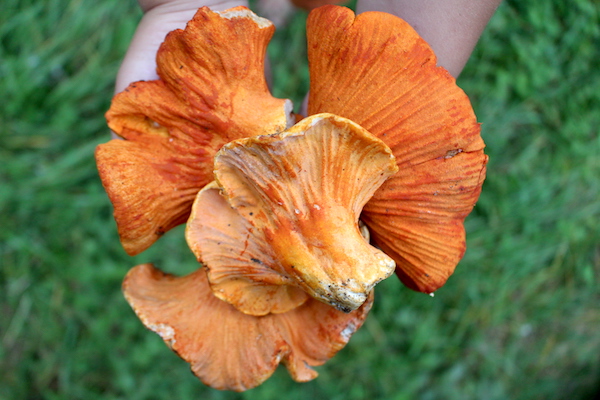
This article was written by Timo Mendez, a freelance writer and amateur mycologist who has foraged wild mushrooms worldwide.
Lobster mushrooms are undoubtedly one of my favorite mushrooms. They are as beautiful as they are delicious and as fascinating as they are mysterious.
I absolutely love their fragrant seafood flavor; it goes well into so many recipes that I’m going hungry just writing about it. Plus, don’t get me started on their gorgeous color. It ranges from a stunning orange, like that of a burning ember, to the vibrant red of the freshly cooked marine crustacean it gets its name from.
Not to mention, for geeks like me, they have a mind-boggling ecology that adds to their charm. For beginner foragers, they’re also great because of how easy and unmistakable they are to identify.
While some folks are off-put by their bizarre growth and lively colors, don’t be intimidated! They are absolutely one any forager should know!
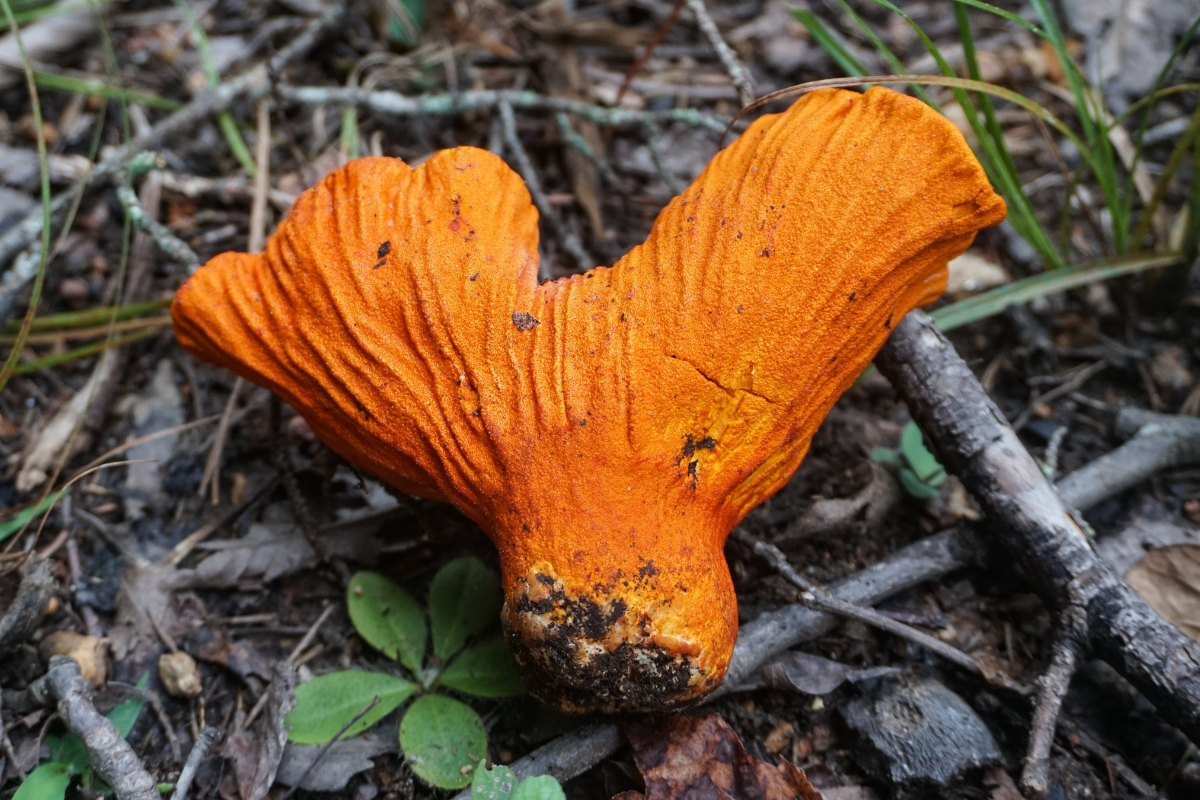
The Fascinating Ecology Of Lobster Mushrooms
The ecology of fungi can be exceedingly bizarre and fascinating. Lobster mushrooms are no exception! They are not just regular old mushrooms by any means. They are actually the mesmerizing result of two distinct fungi; one that is responsible for the mushroom fruiting body, and the other that parasitizes it!
The Host
These mushrooms, or the so-called “victims”, are responsible for the formation of the fruiting body, which becomes parasitized. Only certain species in the Brittle-Gill Family, Russulaceae, are hosts. These are most often members of the Russula brevipes complex, but they can also infect members of the genera Lactarius and Lactifluus.
The uninfected hosts are light in color and are relatively typical “cap and stem” mushrooms. Most of them are subpar edibles without infection, but they become delectable morsels once they are parasitized.
The Parasite
Scientifically known as Hypomyces lactiflourum, this is an obligate parasite that grows on the surface and interior of the mushroom. They transform the shape and color of the otherwise ordinary mushroom into the metamorphosed beauty which we know as lobster mushrooms.
They turn the flesh of their host from brittle to solid and form a vibrant orange crust on the outside of the mushroom. They also transform the edible but rather uninteresting mushrooms into a marveled delicacy.
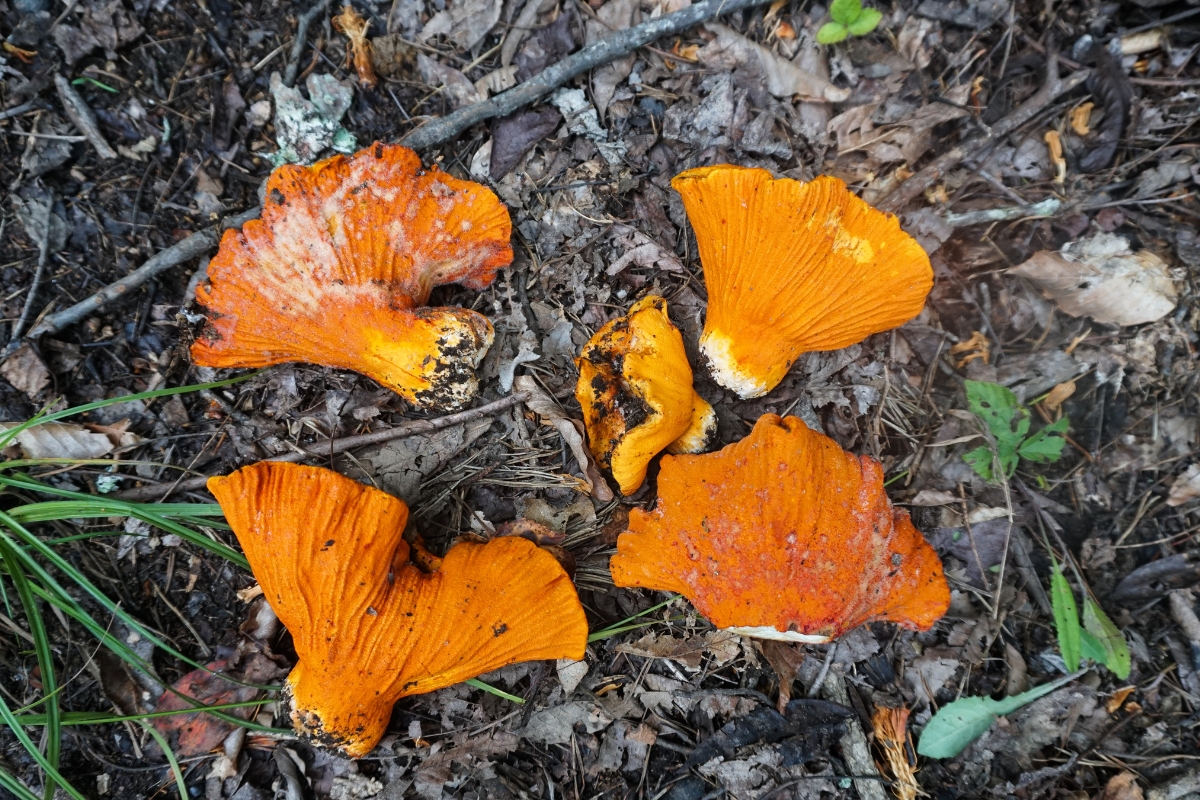
How To Forage For Lobster Mushrooms
Lobster Mushrooms are favorites amongst beginner and expert mushroom hunters alike. For beginners, there’s almost no mushroom that resembles them, making them extremely easy to identify.
They are also relatively widespread and pretty easy to spot.
Their bright red coloration makes them stand out from the forest floor like a neon sign in the darkness of night. There is no need to Sherlock Homes it and tirelessly scan the forest floor like an obsessive truffle dog (as is the case with morels and black trumpets!).
This being said, in some habitats, they can be concealed.
Unlike other mushrooms, which seamlessly weave their way through the soil and duff, Lobsters often begin to enlarge beneath the soil surface. This causes them to lift a layer of topsoil or leaf litter along with it, resulting in bulges on the topsoil known as “shrumps” by mushroom hunters (shroom + bump = shrump. Clever, right?).
Often, only a small part of the mushroom is exposed beneath the layer of topsoil above it.
Expert mushroom hunters know to check any conspicuous bump on the forest floor to see what it may be hiding. Once you find one, don’t move on too quickly. Lobster mushrooms often occur in patches, so keep your eyes peeled for any hidden from plain sight.
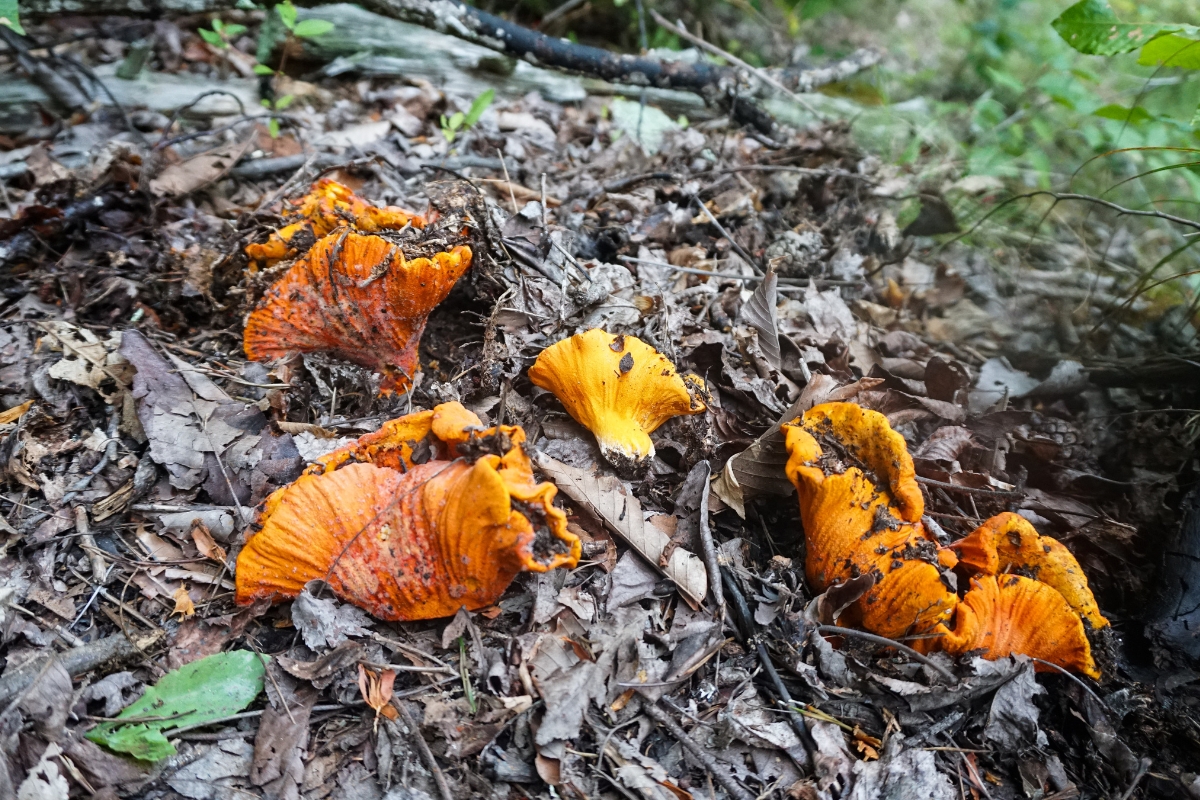
If you really want to up your game, you also want to familiarize yourself with their host mushrooms.
The Short Stemmed Russula (Russula brevipes complex) is perhaps the most important, characterized by being stout, white, and with funnel-shaped caps. Another notable host species is the Peppery Milk Cap (Lactifluus piperatus), which oozes white latex when damaged and has a spicy peppery flavor. Other species in the genera Russula, Lactarius, and Lactifluus can also be hosts.
If you see a lot of these hosts, that’s a good sign that you may be in a zone where Lobster Mushrooms are present.
From my experience, I’ve always seen Lobster Mushrooms fruiting along with the first flushes of the season for their host mushrooms. As the season continues, the parasitized forms become more absent and the uninfected hosts prevail.
This means if you see a lot of potential hosts but no Lobsters, it may be worthwhile to check that spot earlier in the season the following year.
One curious thing I’ve observed about Lobsters is that they enjoy growing in semi-disturbed forested habitats, often in areas with compacted soils.
It’s not uncommon to find them fruiting directly in the middle of a trail, around campgrounds, near old logging roads, and other areas with human disturbance. I know of a prolific patch behind some bathrooms at a local park; I don’t bother picking them, but I’ve always wondered if they profited from some human-derived ammonia left behind by park visitors.
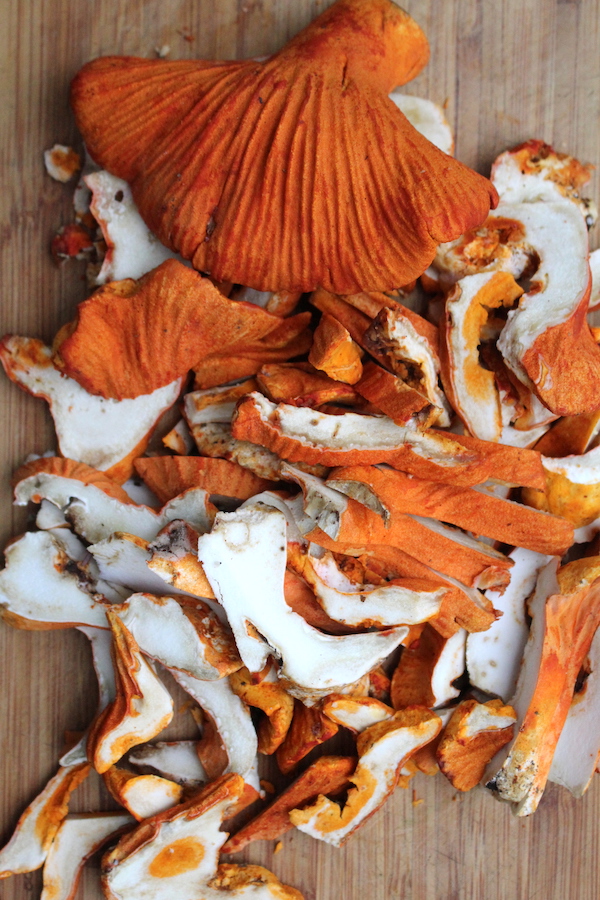
Where To Find Lobster Mushrooms
Since Lobsters are, in fact, parasitized mushrooms, they only occur in areas where both the hosts and parasite are found. While host species are technically found around the world, the parasite Hypomyces lactiflourum is only known to exist in North America!
These hosts, which we discussed earlier, have a mycorrhizal lifestyle.
This means that they only grow in mutual symbiosis with certain tree species. While certain mycorrhizal fungi are very specific to the tree species they associate with, these mushrooms are rather opportunistic and form associations with a wide variety of trees.
Oaks, Spruce, Pine, Hemlock, and a wide number of both hardwoods and conifers are included.
California
In California, Lobster Mushrooms are mostly found on the western side of the northern Coast Range, from Sonoma County and up. They mostly associate with conifers such as Sitka Spruce, Douglas Fir, and Western Hemlock. While it may be possible to find them south of the Bay Area and east of the Coast Range, they are relatively absent in these regions.
Pacific Northwest
Lobster Mushrooms are relatively abundant in Oregon, Washington, and British Columbia. They occur both in coastal habitats and along the cascade range. You find them with Sitka Spruce, Douglas Fir, and Western Hemlock. You can also find them with Pine in the Canadian Rockies.
Colorado and Southwestern Sky Islands
In Colorado, you can find Lobsters alongside Ponderosa Pine. It is most recommended to go into forests dominated by Ponderosa, typically from 6,000-9000 feet in elevation.
Midwestern United States
Here they have several habitats. They are generally sought in mixed deciduous forests dominated by Oak and other hardwoods like poplar. In some regions, like in the far north near the Canadian border you may find them alongside Red Pine or Jack Pine.
Southeastern United States
Along the Gulf States, they are rare, but it is possible to find them alongside various pine species. As you go into northern Georgia in the Appalachians, they become much more common in both pine and hardwood forests. They can be abundantly found along the Appalachians up into the northeast but are rare or absent along the coastal parts of the southeast.
Northeastern United States
In the Northeast, Lobster Mushrooms are relatively common in a diversity of forest types. As you go north, they can be found abundantly with Jack Pines, and in other regions, you may find them in mixed hardwood oak forests.
Eastern Canada
In Quebec and other parts of Eastern Canada, Jack Pine is the main tree host you want to keep your eyes out for.
When To Find Lobster Mushrooms
Generally speaking, in North America, there are three distinct lobster mushroom seasons.
Those of the western United States, those of the Rocky Mountains and Southwestern Sky Islands, and those of the Eastern United States.
While not discussed in this text, Lobster Mushrooms also occur in Mexico and Central America during the summer rainy seasons.
Western United States (July to November): In California and the Pacific Northwest the season usually begins along the coast in areas with abundant fog drip. This can be as early as mid-June if you’re lucky. It peaks around September and slowly wanes off in November. In the southern part of its range, it can extend into December if you’re lucky.
Colorado and Southwestern Sky Island (July to September): Here the season is relatively quick and begins with summer monsoons. It will begin around July, peak in August, and be finished by the end of September. Don’t miss your chance when you get it!
Eastern United States and Canada (June to October): Here the season begins with the summer rains in June and July and then quickly declines with cooler temperatures in the fall. The season is extended in the southern parts of the range and in years with relatively warm fall temperatures.
Identifying Lobster Mushrooms
Lobster Mushrooms are pretty darn easy to identify and hard to mistake for another mushroom. There just isn’t anything that even vaguely resembles them.
Obviously, you should do your due diligence, but compared to other mushrooms, this oddball is kind of a no-brainer to recognize.
Their color is the first thing that distinguishes them. When they’re in their prime, they are completely encrusted in an orange-to-red color, which is reminiscent of a burning ember. The top of the cap is often a little bit lighter in color.
Sometimes the mushrooms can have partial white splotches, and there are even completely white varieties that are not too uncommon. If you do find a white one, it’s usually just one within a patch that are like this, so you won’t have a doubt that it’s a lobster.
As lobster mushrooms age, they get darker red and even have touches of purple. When they mature, they also form white powdery spores on their surface. Usually, by this point, they are no bueno.
Lobster mushrooms come in all shapes and sizes.
They can be small enough to fit in the palm of your hand or about the size of a good head of broccoli. Their shape is usually stout, with a wide stem that curves up to a circular cap, but don’t expect them to be perfectly shaped; they tend to be pretty irregular.
The top of the cap is usually extremely lumpy and wrinkly and often full of dirt. The underside of the mushroom doesn’t have any gills and can be completely smooth or have small, ridge-like folds. Sometimes they resemble the cap-stem shape of their host mushrooms, and other times they take on a more funnel-shaped form.
Under the brightly colored crust, the inside is completely white and seamless. You don’t see any differentiation in the tissues of the mushroom, but it’s just a white solid mass. The mushroom itself is firm and sturdy, unlike its brittle hosts.
Lobsters have a distinct fishy or marine smell, especially when they are old.
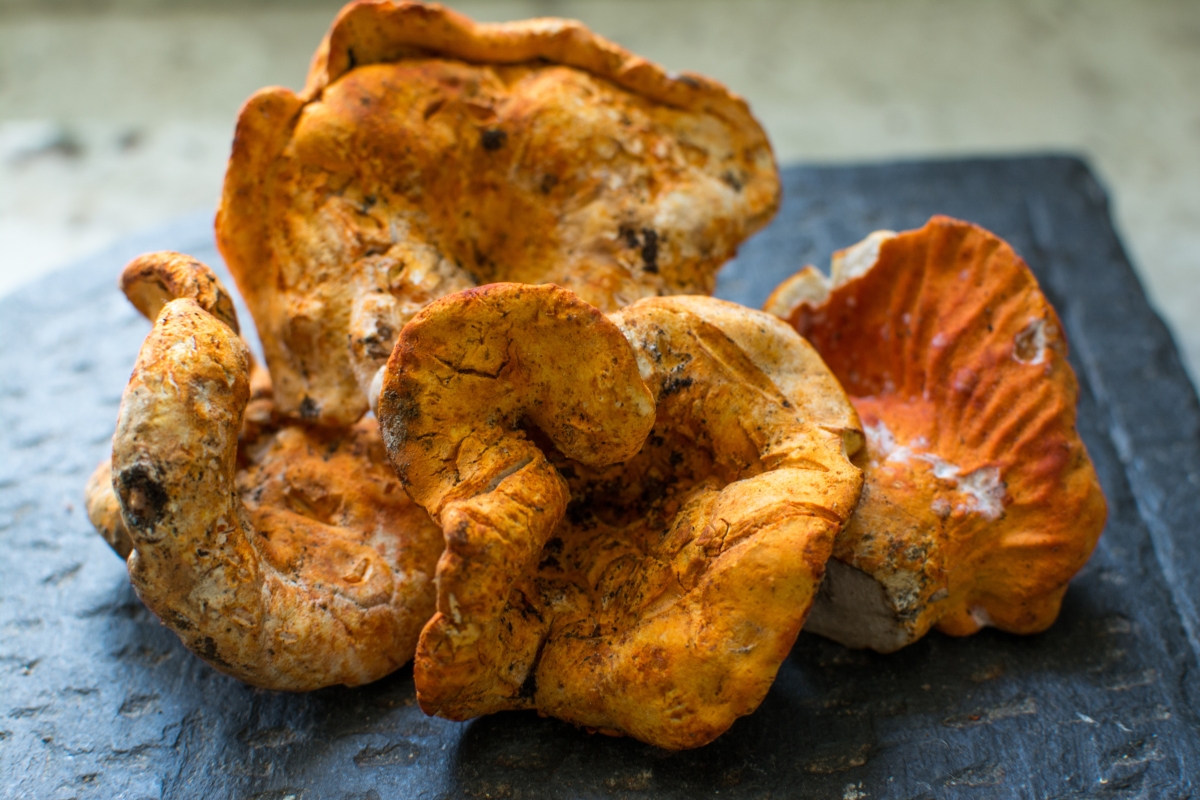
Lobster Mushroom Identification Features
- Bright orange-to-red color
- May have purple splotches and white spores when mature
- Stout with a wide stem that curves to form a circular cap
- Cap is lumpy and wrinkly, often full of dirt
- Underside is smooth or may have small ridge-like folds
- Inside is completely white and seamless with a firm and sturdy texture
- Distinct fishy or ocean smell, especially when old
Lobster Mushroom Lookalikes
I’d be exaggerating to call any mushroom a true lobster mushroom lookalike. Seriously, these mushrooms are so distinct that nothing resembles them.
Chicken of the Woods has somewhat similar colors, but it grows from tree trunks and is a flat circular polypore.
Chanterelles can kind of grow in similar shapes and have ridge-like gills, but they’re softer and a different color. Some might say Jack o’Lantern mushrooms or Sulfur Tufts due to their colors, but these have true gills and a much different texture.
Regardless, if for some reason you have a doubt, don’t eat it and have it confirmed by a local expert.
Harvesting Lobster Mushrooms
When harvesting anything from the wild, it is important to step lightly and always with respect. Consider not only the mushroom itself but also all the organisms to which it’s ecologically tied.
Also, consider the social context and show respect for all the local people who utilize the forested space. This means property owners, hikers, and, of course, other mushroom hunters. Don’t leave any trash, don’t cause erosion, and don’t do anything that could be disrespectful to the environment.
When it comes to harvesting respectfully, only take what you need and always leave some behind. I always encourage people to spend some time admiring the mushroom before picking it. This might be simply looking at it, touching it, taking pictures of it, or whatever way you prefer to enjoy its presence.
While some folks swear by cutting with a knife instead of picking, there is no proof or evidence that cutting is better. Many well-versed mycologists I know actually suggest that picking the entire mushroom is better for the health of the mycelium as opposed to leaving a part of the stem. This being said, for Lobsters, I find it much more practical to go from underneath and pluck the entire mushroom from the ground.
Once you’ve picked the mushroom, you should begin doing some preliminary cleaning.
They are often covered in dirt, which will only be more difficult to take out later as it often gets rubbed into the tissues during transport. For this, I simply remove any dirt that may be on top; a brush is wonderful for this if you have one. Sometimes there is dirt encrusted on the bottom of the stem, this can be peeled off with a sharp knife.
Also, if your mushrooms already have purple stains, a soft texture, and an unpleasant smell, they’re probably not worth picking. Prime mushrooms should be firm and have a vibrant orange color.
Sometimes the mushrooms will have powdery or fuzzy white spores on the surface; this is fine as long as the mushroom is still firm.
Ideally, you should transport your mushrooms in a basket or mesh bag that allows air exchange. This not only keeps your mushroom in better condition, but it also allows spores to spread as you walk along the forest.
Once home, store your mushrooms in a cool and well-ventilated area and consume/process them within one week after picking.

Cooking and Eating Lobster Mushrooms
Lobster Mushrooms are versatile and delicious ingredients that are easy to integrate into a number of recipes. They can truly be the star ingredient of a meal and take a dish to the next level.
Before getting started, it is important to make sure your mushrooms are thoroughly cleaned.
Since they have so many wrinkles and irregular surfaces, dirt easily gets stuck in all their nooks and crannies. While small amounts of clay can usually go unnoticed, proper cleaning is particularly important for Lobsters found in sandy soils. Brushes are great for this.
A peeler is also handy and can help remove any older pieces of the mushroom that have already started to go bad. While people always say not to use water when cleaning mushrooms, a little bit of running water can make the process easier and not necessarily affect their quality too much.
While you don’t want to leave them soaking in a bowl of water, but quickly running them under the sink is okay. If you do feel like they got too wet, you can leave them to dry on a piece of cardboard; they’ll be good to go within 6–12 hours.
My favorite way to consume them is to simply slice and fry them with a bit of butter, garlic, and chopped onions. You can cook them until they start browning a bit on both sides. Like this, they can be eaten on their own, served with a bit of fresh parsley, or added as a topping to soups, pasta, stir-fries, and other dishes.
The oil you cook them in will also absorb their rich red color and delicious flavor. If you add this oil to a soup, it will float to the top, decorating it like red-chili oil. Also, if you fry eggs in this oil, it will give them a nice red color.
Always make sure the mushrooms are well-cooked and pre-cook them if necessary before adding them to a dish. While they are not necessarily toxic raw, they may cause digestive issues.
Lobster Mushroom Recipe Ideas
Lobster mushrooms are pretty versatile and can be used anywhere you’d use any other mushroom, but these are some of their best uses:
Hash Browns and Lobster Crab Cakes: Simply shred them and cook them up like hashbrowns. You can mix them with shredded potatoes as well. You can use shredded lobsters for pseudo-crab cakes or fritters.
Lobster Mushroom Bisque: Do this by frying your mushrooms with onions, celery, garlic, and leek, and then mix it with soup stock. Then blend it until smooth and creamy, adding cream or a thickener if desired.
Risotto: Simply sear up the Lobsters in oil before adding the rice to your favorite Risotto recipe!
Omelet or Scrambled Eggs: This should be self-explanatory!
Lobster Mushroom Toast: Toast and a creamy spread like goat cheese or avocado topped with lobster mushrooms. Hit it with a hint of lemon and cayenne pepper if you are feeling adventurous.
Pizza, Pasta, Tacos, Empanadas, Fried Rice, and more!
Preserving Lobster Mushrooms
Lobster mushrooms can be preserved in a number of ways, depending on how you plan to use them later.
Dehydrated
Dried Lobster Mushrooms are great in several ways. They can be rehydrated and used like Fresh Lobster Mushrooms, or they can be powdered and integrated into several recipes. If you do rehydrate them in water, make sure to utilize the delicious brine!
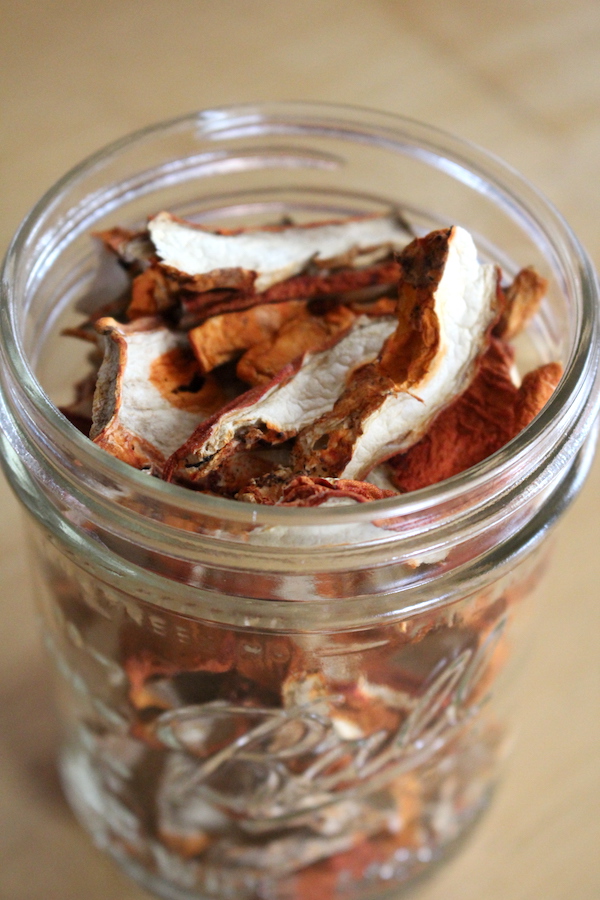
Pickled
To do this, simply slice your Lobster Mushrooms and parboil them for 5-10 minutes until thoroughly cooked. Alternatively, you could also dry sautee them. Afterward, just add them to your favorite pickling brine! I like to spice it up with mustard seeds, raw garlic, and red chili peppers!
Frozen
You can always cook your mushrooms and then freeze them. I usually pre-season them with garlic and onion so they are ready to add to any meal. Never freeze raw mushrooms as you’ll ruin the texture!
Mushroom Foraging Guides
Looking for more mushroom foraging guides? There are plenty of easy-to-identify beginner mushrooms out there in the woods!
- Morel Mushrooms
- Chaga Mushrooms
- Birch Polypore
- Tinder Polypore
- Witches Butter Mushrooms
- Puffball Mushrooms
- Shaggy Mane Mushrooms
- Reishi Mushrooms
- Turkey Tail Mushrooms
- Dryad’s Saddle
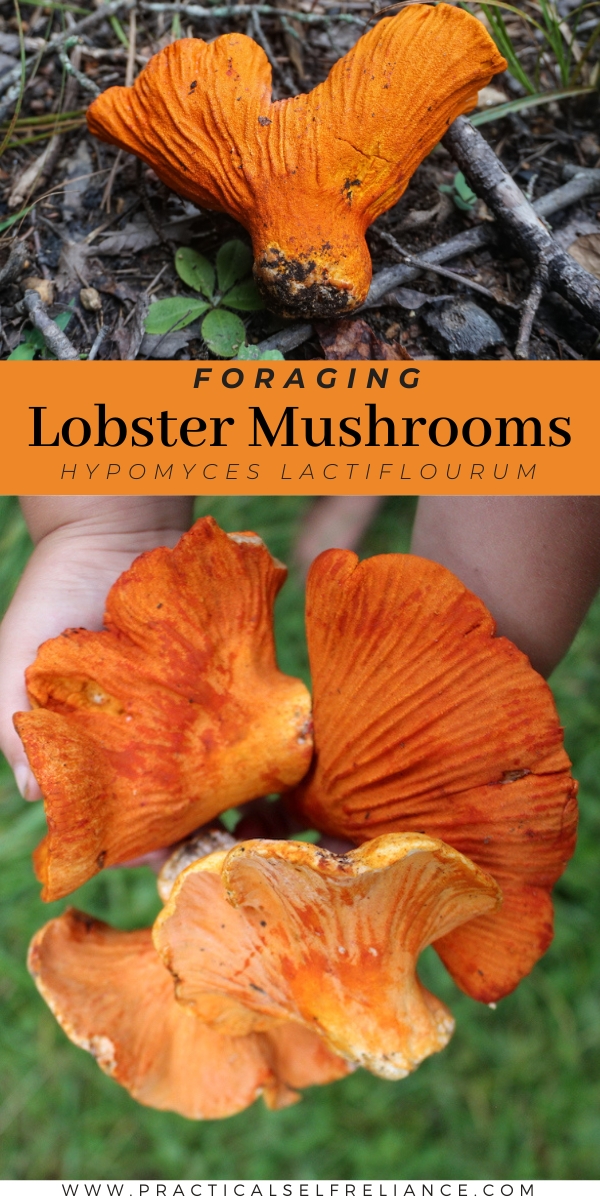

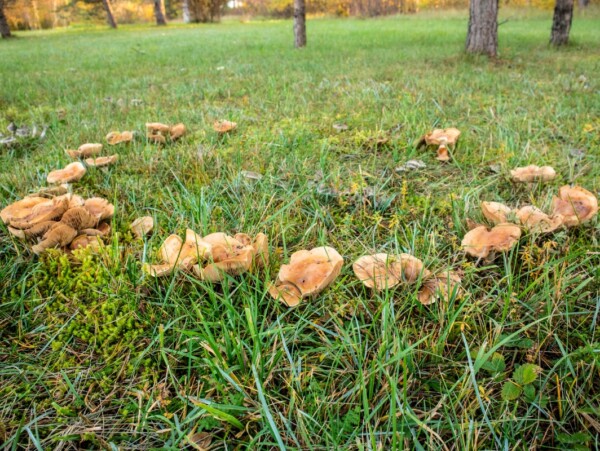
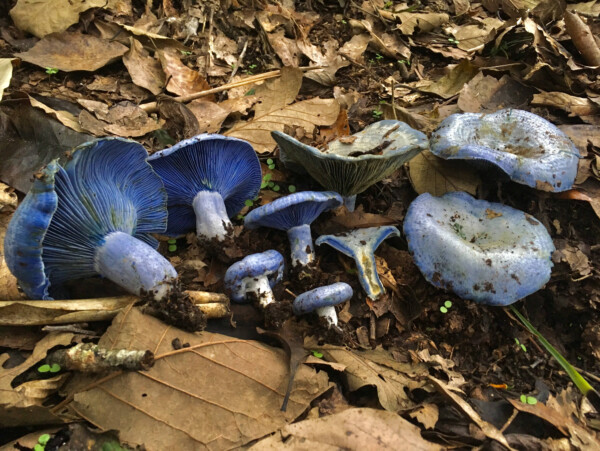
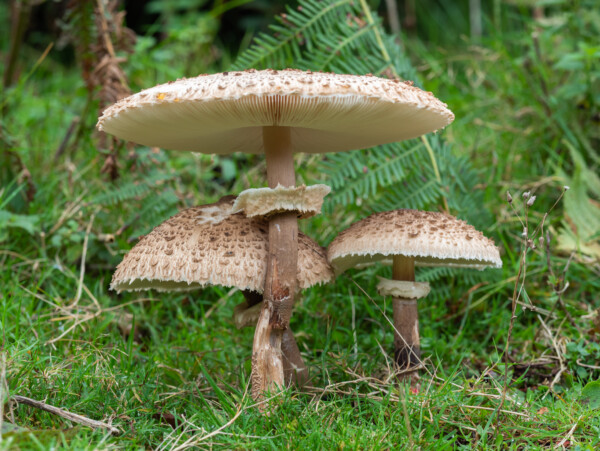
Wow, this post is absolutely fascinating! I had no idea that lobster mushrooms could be foraged. The information on the different stages of development and how to identify them is incredibly helpful. I can’t wait to try my hand at foraging for these delicious mushrooms. Thanks for sharing!